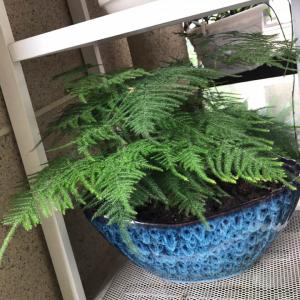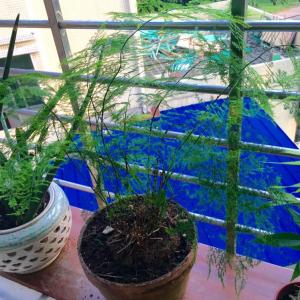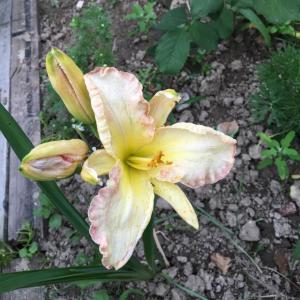动态 (312)
气泡布鲁鲁
2024年09月03日

Reduce, Reuse, and Recycle
Reducing, reusing, and recycling are the three R's of sustainable living. These practices help to minimize waste and conserve natural resources. Start by reducing the amount of single-use plastics you use, such as water bottles, straws, and shopping bags. Instead, invest in reusable options like water bottles and shopping bags made from sustainable materials. Recycle paper, glass, and plastic as much as possible, and make an effort to recycle electronic waste, like old cell phones and computers.Conserve Energy and Water
Conserving energy and water is crucial for a sustainable lifestyle. Start by reducing your energy consumption by turning off lights and electronics when they're not in use, and adjusting your thermostat to use less energy. You can also invest in energy-efficient appliances and products, like LED light bulbs and Energy Star certified devices. In terms of water conservation, fix any leaks in your home, and take shorter showers to reduce water usage. Invest in water-saving showerheads and toilets to further reduce your water usage. Also, consider using drought-resistant plants in your landscaping and switch to a rainwater harvesting system to conserve water.Support Sustainable Agriculture and Eating Practices
The food we eat and how it's grown have a significant impact on the environment. To live sustainably, consider buying locally grown, organic produce and meat, and reducing your consumption of meat, especially beef and pork, which have a larger carbon footprint than other foods. Also, consider starting your own vegetable garden, even if it's just a small container garden on your windowsill or balcony. You can also support sustainable agriculture by participating in community supported agriculture (CSA) programs or visiting your local farmers market.Choose Sustainable Transportation
The way we get around can also have a significant impact on the environment. Choosing sustainable transportation options like walking, cycling, or using public transportation helps to reduce emissions and conserve resources. If you must drive, consider a fuel-efficient car, or even better, an electric or hybrid vehicle.Support Renewable Energy
Renewable energy sources like solar, wind, and hydro power are critical to creating a sustainable future. Support renewable energy by investing in it, either by installing solar panels on your home or supporting renewable energy projects in your community. You can also choose energy providers that offer renewable energy options and participate in programs that support renewable energy production.Conclusion
Sustainable living is a choice that we can all make to create a more sustainable future. From reducing, reusing, and recycling, to choosing sustainable transportation and supporting renewable energy, there are many ways we can adopt sustainable living practices in our daily lives. By making small changes, we can make a big impact on the environment and ensure a sustainable future for generations to come.
文章
气泡布鲁鲁
2024年09月03日

What is Minimalist Living?
Minimalist living is a lifestyle philosophy centered around the idea of living with less. It involves simplifying your possessions, your environment, and your life in order to focus on what truly matters and cultivate a more intentional and meaningful existence.The Benefits of Minimalist Living
More Time and Freedom
Minimalist living can free up more time and energy by reducing the time and effort you spend on clutter, cleaning, and maintaining possessions. With less physical and mental clutter, you have more space and freedom to focus on what truly matters.Increased Clarity and Purpose
Minimalist living can help you clarify your values, priorities, and goals, and lead you to a more intentional and fulfilling life. By decluttering your life and focusing on what truly matters, you can gain greater clarity about what you want out of life and what you don't.Improved Financial Health
Minimalist living can lead to improved financial health, as it encourages you to spend less on possessions and prioritize savings and investments. With a focus on spending money on experiences rather than things, you can cultivate a more fulfilling and meaningful life without breaking the bank.How to Embrace Minimalist Living
Start Small
Minimalism isn't about making a radical change overnight, but rather a gradual process of simplifying your life. Start small, and make changes that feel manageable and sustainable for you.Get Rid of Clutter
The first step in minimalist living is getting rid of clutter. Sort through your possessions and get rid of anything that doesn't serve a purpose or bring you joy. You may find it helpful to start with one room at a time and work your way through your entire home.Prioritize Experiences Over Possessions
Minimalism is about prioritizing experiences over possessions. Rather than spending money on material goods, focus on investing in experiences and creating memories. Whether it's traveling, trying new things, or spending time with loved ones, focus on creating experiences that bring you joy and fulfillment.Practice Gratitude and Mindfulness
Minimalism is a state of mind, and it's important to cultivate gratitude and mindfulness in your daily life. Practice gratitude by focusing on what you have and what brings you joy, and cultivate mindfulness by being present in each moment and savoring each experience.Conclusion
Minimalist living is a lifestyle choice that can bring more peace, purpose, and joy into your life. By simplifying your possessions, your environment, and your life, you can focus on what truly matters and cultivate a more meaningful and intentional existence. Start small, prioritize experiences over possessions, and embrace gratitude and mindfulness to begin your minimalist journey.
文章
气泡布鲁鲁
2024年09月03日

Paint with Magnets
According to Audrey Van de Castle, manager of Stanley Black & Decker's Maker Initiatives, to create a gallery wall that can be changed on the go, apply Rust-Oleum Magnetic Paint ($21.58, amazon.com) and adhesive-backed magnets to the back of lightweight prints or picture frames. You might also try painting colorful accent shapes with magnetic paint around the artwork.Easel for Display
Corey Paige, an artist, suggests displaying bigger works on a display easel. "Regardless of what you're showing, it instantly gives a distinctive touch to your area," she says. "You don't expect to go into someone's house and find paintings exhibited on an easel—usually it's a conversation starter because it emphasizes the work."Clothespins and String
Another possibility? Van de Castle recommends stringing a length of rope across your wall using tape or mounting putty ($1.89, target.com), then displaying prints along the line with ornamental clips or clothespins.Suspended from the Roof
Lindsay Pumpa, the proprietor of L Pumpa Designs, recommends driving hooks into the ceiling instead of wainscot or tiled walls. The framed artwork may then be suspended using rope, leather, or chains.Grid of Wires
A wire grid ($45, crateandbarrel.com) is another option for occupying more vertical space, according to Paige, and is ideal for your work area. Attach your favorite posters or images using clothespins.Shelves on Ladders
According to Paige, framed prints look wonderful exhibited on a ladder shelf since leaning art is a terrific way to give depth to a space. Simply frame your painting and place it on a shelf. If your ladder shelf is leaning against a wall, you may use the top shelf to showcase a bigger framed artwork.Room Separator
Another creative approach to creating a gallery wall out of modest pieces of art? Pumpa suggests using a folding screen or room divider. This is a great idea to separate a studio apartment into several "rooms" while also providing a nice focal point.
文章
气泡布鲁鲁
2024年09月03日

How Frequently Should You Clean Your Shower or Bathtub?
Finally, cleaning your bathtub or shower on a weekly basis is the best way to keep these troubles at bay. "Start by eliminating all the goods you have—shampoo, conditioner, shower gel, and so on," Ricky Regalado, proprietor of Rozalado Services and Route, suggests. Then, he recommends spraying the space with a cleaning solution from top to bottom, covering all surfaces.Cleaning the Bathtub, Shower, and Shower Head
However, soap scum isn't the only thing that accumulates in bathtubs and showers. Water deposits and skin cells blend with soap and, in a humid atmosphere, create mold, mildew, and bacteria—things you don't want in your home, according to Mary Cherry, owner of Evie's Cleaning Company. Furthermore, water deposits may harm your surfaces and hardware, such as your faucet, handle, and showerhead, requiring you to repair them more often. The showerhead is an often-overlooked section of the shower to clean—and it's really simpler to get shining than you may imagine. You can even clean it using ingredients from your pantry. According to Vianney Garcia, quality control manager at Rozalado Cleaning, combine baking soda and vinegar in a bag, gently pouring the vinegar. "When mixing this combination, gently and carefully pour the vinegar into the bag since it may generate a boiling effect and early foaming when it rapidly bonds with the baking soda," Garcia says. Attach the bag to the showerhead with a rubber bend and soak it for at least three hours, preferably overnight. Then, carefully remove the bag and clean the shower head to remove any tartar residue. To finish the cleaning procedure, turn on the shower and let it run for a few minutes.Selecting the Best Cleaner
Cherry adds that the sort of cleaning you use should be determined by the surface. "Tiles constructed of stone, such as marble or travertine, need specific cleansers," she says. "This implies you should avoid using anything acidic or abrasive, such as vinegar." Cherry also recommends against using melamine sponges while scrubbing since they are harsh and might cause harm. Look for a solution that enables you to spray and move away before utilizing all of your muscle. "Letting the product work its magic on the surface equals less effort for you," she explains.Remember to Remove Your Shoes
Finally, while cleaning, remove your shoes before entering your bathtub or shower to avoid adding new germs to the surface. However, you should not go barefoot. "You don't want to get all of the scum, germs, and bacteria on your bare feet, particularly if you have a cut," Cherry adds, recommending putting towels beneath your feet to protect them while also preventing slipping and falling.
文章
气泡布鲁鲁
2024年09月03日

Always Hang Items
Let's start with your closet. Which garments should always be hung?Fabrics with a Flow
DeMorrow recommends anything made of flowing textiles. "Anything made of silk, chiffon, or other 'flowy' materials—commonly dresses or blouses—should be hanging," expert organizer Melissa Keyser recommends. "I encourage my customers to consider how the fabric moves in a wind; if it seems to float or dance about, it won't be happily folded and tucked in a drawer."Linen
Linen is infamous for wrinkles, which is why you should hang any linen items in your closet. "Hanging [linen] minimizes unwanted wrinkles," explains Robyn Reynolds, professional organizer and CEO and owner of the household organizing firm Organize2Harmonize. DeMorrow concurs: "To look its best, linen nearly always requires ironing. Anything linen should definitely be hung."Pants
While jeans may not necessarily need a home in your closet, you should prepare to hang all of your other pants (like dressier slacks). "Dresses and casual pants should always be hanging," Reynolds advises. "You can hang them both ways or flip the hanger over."Blouses
Keep your lovely blouses on a hanger if you don't want them to be full of creases and irritating wrinkles. "Blouses should always be hanging," Reynolds explains. "This will aid in the removal of big wrinkles."Jackets
Jackets are huge items, and putting them in a drawer will not only produce creases (and maybe harm the structure of the piece), but it will also take up much of your space. "Any jacket should be hanging," Reynolds advises. "They are too big to fold, regardless of the type—blazers, denim jackets, outerwear."(The majority of) Gowns
Most, but not all, of your dresses, deserve to be hung vertically in your closet. "For the most part, dresses should always be hanging," Reynolds advises. "Heavy sweater dresses or heavy dresses of any type would be an exception. When they are hanging, they have a tendency to stretch. Fold these to prevent this from happening."Always Fold Items
Now that you know which garments to hang, let's talk about which ones to fold, beginning with your heavier winter knits.Sweaters that are thick
Fold them, according to our experts, to retain structural integrity and save space in your wardrobe. "In general, very bulky sweaters should be folded," explains DeMorrow. "There are folding ways to gently wrap your sweater around a hanger to prevent producing hanger marks, but it's not intuitive for most people, and a bulky sweater may take up a very thick breadth, frequently taking up the area of six or more hanging blouses."Activewear
Plan to fold yoga pants, exercise shirts, activewear, and anything else you'd wear to the gym. "If they're on a hanging, they may become crooked and stretched out," explains Keyser. Shorts While you don't have to fold your shorts, there's really no need to hang them—they'd be better off folded and put in your closet. "Shorts should always be folded because hanging them makes no sense," Reynolds argues.Items That Can be Hung or Folded
However, depending on space and personal inclination, certain clothing items may be folded or hung.T-Shirts
T-shirts are one example. "T-shirts may be hung, folded, or piled," DeMorrow explains. "Without a doubt, hanging them decreases the likelihood of wrinkles. However, most current shirts have some elastic material (Lycra or similar) that enables them to remain wrinkle-free in any situation—[including when folded]. " If you do decide to hang your t-shirts, use the proper hangers—Keyser favors cushioned ones. "A softer (and broader) choice may assist reduce deformation caused by a small hanger," she says.Jeans
Jeans are one of the most adaptable things in your wardrobe, and this is especially true when it comes to storage. "[Jeans] is the simplest to fold since they are generally on the thicker side and keep their form," Reynolds explains. "Of course, some people would rather hang them. If that's the case, I'd suggest folding them over the hanger."Scarves
Do you have a scarf collection? "Scarves may be folded, rolled, or hung," DeMorrow explains. While scarves may be preserved in a number of ways, the size of the scarf frequently determines whether it is better to fold or hang. "Bigger scarves that double as shawls should be folded since it is simpler for something so large," Reynolds advises. "Small ones worn around the neck may be folded and kept in drawers or containers, or hung on scarf hooks."
文章
气泡布鲁鲁
2024年09月03日

Kitchens in White
White kitchens, according to New Jersey-based designer Swati Goorha, have completely lost their luster. "I find white kitchens lifeless and devoid of charm," she says. "There is so much flexibility to personalize the location where you spend the majority of your time. Kitchens are often considered the heart of the house, and they should elicit feelings of pleasure and love." Aside from the aesthetics, all-white kitchens are notoriously difficult to keep clean since every stain and spec is obvious. Incorporate a splash of color to make your environment more approachable and tolerant of sauce spills and food crumbs. "If you're not ready to commit to all green cabinets, bring color in the backsplash," Goorha suggests. "It's always a yes to add handmade tiles or glass tiles to bring some flair into the heart of the house."Farmhouse Design
Once upon a time, farmhouse contemporary was the hottest design trend. However, with the growth in popularity of cottagecore and coastal grandma designs, your country chic kitchen is in need of an update. The good news is that updating your farmhouse kitchen doesn't have to be a major undertaking. It's all about establishing a balance between old and contemporary, according to Bobby Berk, Shutterfly's resident design guru. "I would propose combining classic and modern designs without the distressed effect," he says. "To create an upscale version of this design, try balancing your exposed brick with some eye-catching light, selecting for smooth wood finishes, or even changing out black metals for gold and silver." If you want to ditch your farmhouse decor in favor of the current cottagecore craze, it's best to start small. "Adding in modest wood design elements as tabletop décors, such as these Shutterfly wood cutting boards," Berk adds. "Layering cutting boards of various shapes and sizes produces the ideal farmhouse aesthetic without requiring big renovations."Appliances in Vibrant Colors
A splash of color is an easy way to add flair to your kitchen, but you need be careful where you put it. Colorful appliances, according to Berk, are the main causes. Not only can these eclectic devices impact the entire style of your kitchen, but they may also be difficult (and costly) to repair. Berk suggests keeping with neutral-toned appliances and experimenting with a "two-tone color scheme" for a timeless and cost-effective solution. "If you like having color or patterns in your home, try adding bursts of color with your table linens, tableware, kitchen towels, or even by putting cushions to each of your dining chairs," he advises.Granite
There is no lack of stylish details with a seemingly limitless mix of backsplashes, countertops, and hardware to pick from. However, the improper balance might make your place seem outmoded. Replace the granite countertops if you just want to change one thing. "It's a fast sign of an outdated kitchen," said GordonDunning founders Lathem Gordon and Cate Dunning. Choose soapstone or marble countertops instead. "They will crack and patina with time, which is completely acceptable with us—perhaps even preferable," the design team explains. "We love that the kitchen will tell the tale of making cookies with family or sharing a delicious dinner with guests for many years to come." If you don't want a countertop that will show signs of wear and tear, Gordon and Dunning recommend quartz or a more solid granite like Absolute Black. "We always recommend a sharpened finish," they say.
文章
气泡布鲁鲁
2024年09月03日

Introduction
In the hustle and bustle of our daily lives, one often forgets to prioritize a crucial aspect that paves the way for a secure and comfortable future – financial planning. While it may seem daunting at first, financial planning is like a compass that guides us towards a prosperous and worry-free life. In this article, we'll explore the art of financial planning and how it can lead to a life of comfort and peace of mind.Setting Clear Goals
The foundation of any effective financial plan is setting clear and achievable goals. These goals can be short-term, like buying a new car or taking a dream vacation, or long-term, such as retiring comfortably or buying a home. Identifying your goals provides a sense of direction, allowing you to create a roadmap for your financial journey.Budgeting: The Key to Success
A well-structured budget is the cornerstone of financial planning. It helps you understand where your money is coming from and where it's going. Start by tracking your income and expenses. Categorize your expenses into essentials (like housing, food, and utilities) and non-essentials (like entertainment and dining out). This step will enable you to identify areas where you can cut costs and redirect funds toward your financial goals.Building an Emergency Fund
Life is unpredictable, and unexpected expenses can quickly derail your financial plans. That's why it's essential to build an emergency fund. Aim to save at least three to six months' worth of living expenses in a high-yield savings account. This safety net will provide peace of mind and financial stability during challenging times.Reducing Debt
High-interest debt, such as credit card debt, can drain your finances and hinder your ability to achieve your goals. As part of your financial plan, prioritize paying down debts. Start with high-interest debts first and gradually work your way down. The sooner you reduce your debt, the more financial freedom you'll gain.Invest Wisely
Investing is a powerful tool for growing your wealth over time. Consider diversifying your investments across different asset classes, such as stocks, bonds, and real estate. If you're unsure about investing, consult a financial advisor who can help you make informed decisions based on your goals and risk tolerance.Retirement Planning
One of the most critical aspects of financial planning is preparing for retirement. Start saving for retirement as early as possible to take advantage of compounding interest. Explore retirement account options like 401(k)s and IRAs, which offer tax advantages. Determine how much you'll need to retire comfortably and adjust your savings accordingly.Insurance Coverage
Insurance is a fundamental part of financial planning. Ensure you have adequate coverage for health, life, auto, and home insurance. Adequate insurance protects you and your family from unexpected financial burdens and provides peace of mind.Review and Adjust
Financial planning is not a one-time activity; it's an ongoing process. Regularly review your financial goals, budget, investments, and insurance coverage. Life circumstances change, and your financial plan should adapt accordingly. Make adjustments as needed to stay on track towards your goals.Conclusion
In the journey of life, financial planning is your trusty companion, ensuring that you navigate the waters of uncertainty with confidence. By setting clear goals, budgeting wisely, reducing debt, investing smartly, and preparing for retirement, you can secure a comfortable and worry-free future. Remember that financial planning is not about restricting your present but enhancing your future. So, take the first step today, and let your financial plan be the blueprint to a life of comfort and fulfillment.
文章
气泡布鲁鲁
2024年09月03日

Introduction
In the relentless pursuit of happiness and a fulfilling life, individuals often overlook one of the most potent tools at their disposal - the practice of gratitude. This simple, yet profoundly transformative practice, stands as a beacon of positivity, fostering happiness, well-being, and a deeper connection with the world around us. Rooted deeply in various cultural and spiritual traditions, gratitude has now also found backing in scientific research for its positive impact on overall life satisfaction. This comprehensive guide seeks to elucidate the transformative power of gratitude, showcasing its role as a cornerstone in building a life resplendent with contentment and joy.Chapter 1: The Psychological Foundations of Gratitude
In our endeavor to comprehend the powerful role of gratitude in shaping a fulfilling life, we first delve into its psychological foundations. This chapter intricately dissects the cognitive processes and biological underpinnings behind gratitude, presenting a compelling case for its role as an essential component in crafting a satisfying and enriched life.The Neurobiology of Gratitude
Gratitude is far more than just a positive emotion or a fleeting feeling of happiness. It represents an intricate neurobiological process that profoundly influences the structure and function of the human brain. Engaging in acts of gratitude stimulates neural pathways associated with happiness and well-being, fostering a mindset that appreciates life's multifaceted blessings. In this section, we explore the scientific phenomena that underlie the practice of gratitude, discussing how it can reshape our brain's neural circuits to enhance psychological well-being and cultivate a richer, more fulfilling life.Gratitude and Mental Health
The embrace of gratitude serves as a formidable ally in bolstering mental health. By focusing on positive experiences and appreciating life's blessings, individuals can mitigate the symptoms of depression and anxiety. This section delves deeply into the profound impacts of gratitude on mental health, illustrating its role in enhancing mood, reducing stress, and fostering a positive and resilient outlook on life. Through empirical evidence, we underscore how incorporating gratitude into daily practices can serve as a buffer against mental health challenges, steering individuals towards a path of contentment and joy.Chapter 2: Incorporating Gratitude into Daily Life
Understanding the theory and science behind gratitude lays the groundwork, but the true magic unfolds when individuals incorporate it into their daily lives. This chapter offers a plethora of practical guidance on seamlessly integrating gratitude into daily routines, thereby paving the way for a life filled with richness and fulfillment.Keeping a Gratitude Journal
At the heart of cultivating a sustained practice of gratitude lies the concept of keeping a gratitude journal. This simple yet powerful tool serves as a tangible reminder of the countless blessings that adorn one's life. This section provides in-depth insights into the practice of maintaining a gratitude journal, detailing how this habit can cultivate a positive mindset, nurture a deeper appreciation for life's moments, and serve as a sanctuary of joy and positivity amidst life's turbulent phases.Mindful Appreciation
Pairing mindfulness with gratitude yields a practice that fosters a profound connection with the present moment, allowing individuals to bask in the beauty of the 'now'. This section elucidates the practice of mindful appreciation, offering guidance on cultivating a habit that acknowledges and appreciates the beauty and positivity encapsulated in daily experiences. Through real-life anecdotes and practical tips, we explore how this habit can anchor individuals to a life overflowing with happiness and fulfillment.Chapter 3: The Ripple Effect of Gratitude
Gratitude, when practiced with sincerity and consistency, transcends the individual sphere and influences the broader community, creating waves of positivity and harmony. This chapter delves into the ripple effect of gratitude, emphasizing its role in fostering harmonious relationships and building a supportive and loving community.Gratitude and Relationships
In the context of relationships, gratitude stands as a nurturing force that fosters empathy, strengthens bonds, and engenders harmonious interactions. This section explores the transformative impact of expressing gratitude in relationships, discussing how it can build trust, foster understanding, and create a foundation for relationships that are rich in love, respect, and mutual appreciation. Through various perspectives, we illustrate how gratitude can be a guiding force in crafting relationships that are both fulfilling and enriching.Fostering a Community of Gratitude
Beyond personal relationships, gratitude holds the immense potential to transform entire communities. By fostering a community grounded in mutual appreciation and support, society can move towards harmony and cohesion. This section delves into strategies and initiatives that can nurture a community of gratitude, discussing how such communities can pave the way for positive societal change, fostering environments where individuals thrive together in harmony and mutual respect.Conclusion
As we navigate the intricate path of life, embracing gratitude emerges as a guiding light, illuminating the way towards happiness and fulfillment. Its transformative effects resonate at both personal and communal levels, fostering a deep-seated appreciation for the multifaceted beauty of life. As individuals cultivate a deep-seated habit of gratitude, they pave the way for lives brimming with joy and contentment, leaving a lasting, positive imprint on the world around them. In the grand scheme of life, the practice of gratitude stands as a simple, yet profoundly transformative tool, guiding individuals towards a life that resonates with true happiness and fulfillment.
文章
气泡布鲁鲁
2024年09月03日

Unveiling the Off-Grid Lifestyle
1. Embracing Independence
Pros:
- Self-Sufficiency: Living off the grid involves generating your own energy, water, and even food, reducing reliance on external resources. - Connection to Nature: Off-grid living often involves being surrounded by nature, fostering a deep connection to the environment. - Reduced Expenses: By producing your own resources, you can significantly lower utility bills and living costs.Cons:
- Initial Investment: Establishing an off-grid setup requires a significant upfront investment in equipment and infrastructure. - Learning Curve: Adapting to off-grid living requires learning new skills for energy generation, waste management, and sustainable practices. - Limited Convenience: Off-grid living may involve sacrifices in terms of modern conveniences, such as reliable internet connectivity.Understanding Energy Independence
1. Renewable Energy Sources
Pros:
- Sustainability: Harnessing solar panels, wind turbines, or hydroelectric systems promotes clean energy production and reduces carbon footprint. - Lower Bills: Generating your own energy can lead to substantial savings on electricity bills over time. - Resilience: During power outages or disruptions, you have a reliable energy source that keeps your home functioning.Cons:
- Initial Costs: Setting up renewable energy systems can be expensive, including purchasing and installing the necessary equipment. - Weather Dependency: Energy generation from renewable sources is weather-dependent and may fluctuate based on sunlight, wind, or water availability. - Maintenance: Regular maintenance and occasional repairs are necessary to keep renewable energy systems functioning optimally.Addressing Water and Waste Management
1. Rainwater Harvesting
Pros:
- Sustainable Water Source: Collecting rainwater provides a reliable source of water that can be used for various purposes. - Conservation: Rainwater harvesting reduces demand on municipal water systems, conserving water resources. - Lower Bills: Using rainwater for non-potable purposes can lead to reduced water bills.Cons:
- Initial Setup: Installing rainwater collection systems requires proper infrastructure and filtration mechanisms. - Seasonal Variation: Availability of rainwater may vary with seasons, potentially leading to water scarcity during dry periods. - Maintenance: Regular maintenance is necessary to ensure rainwater collection systems are clean and functional.2. Sustainable Waste Disposal
Pros:
- Minimal Environmental Impact: Proper waste management methods, such as composting and recycling, minimize environmental harm. - Reduced Pollution: Off-grid living encourages responsible waste disposal, preventing pollution of local ecosystems. - Education and Awareness: Adopting sustainable waste management practices promotes awareness of environmental issues.Cons:
- Effort and Education: Implementing sustainable waste disposal requires education and effort to understand proper techniques. - Limited Services: Off-grid areas may lack access to waste collection services, necessitating self-management. - Space Requirements: Composting and waste disposal systems may require space on your property.Assessing Suitability and Lifestyle Alignment
1. Personal Values and Priorities
Before transitioning to an off-grid lifestyle, consider whether your personal values align with self-sufficiency, sustainability, and a connection to nature. Evaluate your willingness to adapt to a lifestyle that requires more hands-on involvement in daily tasks.2. Commitment to Learning
Living off the grid often involves acquiring new skills related to energy generation, water management, and sustainable practices. Assess your willingness to invest time in learning and developing these skills.3. Preparedness and Resilience
Off-grid living requires preparedness and resilience to handle challenges such as power outages, equipment malfunctions, and weather-related disruptions. Evaluate your ability to adapt and find solutions in various scenarios.Exploring a Life Beyond the Grid
The off-grid lifestyle offers a unique opportunity to embrace self-sufficiency, connect with nature, and reduce environmental impact. However, it's essential to carefully consider both the benefits and challenges associated with this lifestyle before making the transition. Assess your values, resources, and willingness to learn as you contemplate whether living off the grid aligns with your aspirations for a more independent and sustainable way of life.
文章
气泡布鲁鲁
2024年09月03日

Unveiling the Housing Landscape
1. Renting an Apartment
Pros:
- Flexibility: Renting offers the flexibility to relocate easily based on changing circumstances or job opportunities. - Minimal Maintenance: Landlords typically handle maintenance and repairs, relieving tenants of the associated responsibilities. - Amenities: Apartment complexes often provide amenities like fitness centers, pools, and communal spaces.Cons:
- Limited Equity: Rent payments do not contribute to building equity, making it a less financially rewarding option in the long term. - Rent Increases: Landlords can increase rent at the end of the lease term, potentially impacting affordability. - Restrictions: Renting may come with restrictions on decor, pets, and other personalizations.2. Owning a House
Pros:
- Investment: Homeownership builds equity over time, providing a potential financial asset. - Personalization: Homeowners have the freedom to personalize and modify their living space to suit their preferences. - Stability: Owning a house provides stability and a sense of community, especially for families.Cons:
- Maintenance Costs: Homeowners are responsible for maintenance and repairs, which can be costly. - Financial Commitment: The upfront costs of purchasing a home can be substantial, including a down payment, closing costs, and ongoing mortgage payments. - Less Flexibility: Selling a house can be time-consuming and may require a relocation commitment.Exploring Shared Living
1. Roommates
Pros:
- Cost Sharing: Sharing expenses, such as rent and utilities, can significantly reduce individual financial burdens. - Social Interaction: Living with roommates offers companionship and opportunities for socializing. - Shared Responsibilities: Chores and household tasks can be distributed among roommates.Cons:
- Compatibility: Compatibility with roommates can be a challenge, affecting living dynamics. - Privacy: Shared living spaces may limit privacy and personal space. - Conflict Resolution: Differences in living habits or preferences can lead to conflicts that need to be addressed.2. Co-living Spaces
Pros:
- Fully Furnished: Co-living spaces often come fully furnished, simplifying the moving process. - Community: Co-living spaces foster a sense of community and provide opportunities for networking and socializing. - All-Inclusive: Rent in co-living spaces typically covers utilities, internet, and shared amenities.Cons:
- Limited Personalization: Co-living spaces may have limitations on personalizing your living environment. - Noise and Crowding: The communal nature of co-living may result in noise or crowding at times. - Shared Spaces: Shared facilities like kitchens and bathrooms may require coordination and adaptation.Embracing Alternative Housing
1. Tiny Houses
Pros:
- Minimalist Living: Tiny houses promote a simpler, clutter-free lifestyle. - Eco-Friendly: Tiny houses often have a smaller environmental footprint. - Affordability: Building or purchasing a tiny house can be more cost-effective than traditional housing.Cons:
- Limited Space: Tiny houses offer limited living space, which may require adjustments. - Zoning and Regulations: Zoning laws and regulations may impact the feasibility of living in a tiny house. - Downsizing Challenges: Transitioning to a tiny house may require downsizing belongings significantly.2. Mobile Homes
Pros:
- Affordability: Mobile homes tend to be more affordable than traditional houses. - Mobility: Mobile homes offer the flexibility to relocate while still having a familiar living environment. - Community Living: Mobile home parks often provide a sense of community and shared amenities.Cons:
- Depreciation: Mobile homes can depreciate in value over time. - Land and Location: The availability of suitable land for mobile homes may be limited in certain areas. - Resale Challenges: Selling a mobile home can be more challenging than selling a traditional house.Choosing Your Path
The tapestry of living arrangements offers a myriad of options, each with its unique set of advantages and challenges. Whether you opt for renting an apartment, owning a house, sharing living spaces, or exploring alternative housing, the decision should align with your lifestyle, preferences, and financial goals. Consider your priorities, long-term plans, and the level of commitment you're comfortable with. With thoughtful consideration, you can select a living arrangement that enriches your daily life and contributes to your overall well-being.
文章
相关用户


















